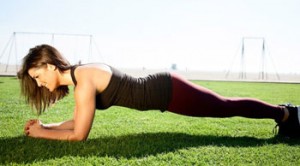The reason why you should spend more time practicing your short game than your swing is not because the short game is more important. It’s because the short game is more complicated. You have short chips, long chips, pitches, and they’re all different kinds of shots. On the other hand, you have one swing. So spend an equal amount of time on each kind of shot, and you’ll have it right. (Then there’s putting.)
What I’m saying is that you should practice shots, not phases. Then I got to thinking, how would you allocate your time between these shots? You would certainly want to spend more time on the ones that are most important. But which ones are the most important?
I listed six shot types (swing, long pitch, short pitch, chip, sand, putt) and compared each one head to head. That’s fifteen comparisons. In the spreadsheet below, I wrote in the cell the most important shot, in my opinion, between the one in the column head and row head (click to enlarge).
You can see that “swing” came out on top all five times. You have to jump around a bit, but chip came out on top three times. Because “sand” is 0 does not mean it has no importance, but that it is the least important shot of the six.
This list tells me how I should prioritize my practice: swing first, putting second, and so on. It does not tell me how much time I should spend on each shot type. I would suggest working on all of them at least a bit, and spend extra time on the one(s) you are having trouble with at the moment.
This is my take based on how I play right now. Ten years ago, when my swing was less accurate, I was hitting more short pitches into greens than chips, so those shots would have been in different order. As far as sand goes, I’m hardly ever in a bunker.
You might want to make up your own shots type and run your own comparisons. It would show you how to spend your practice time wisely.






